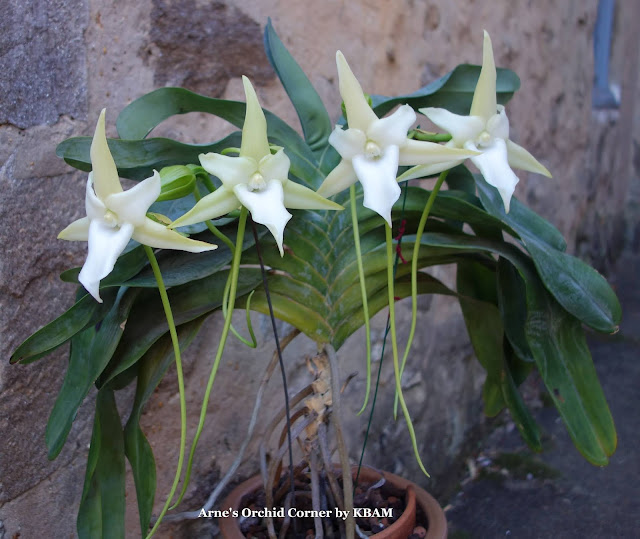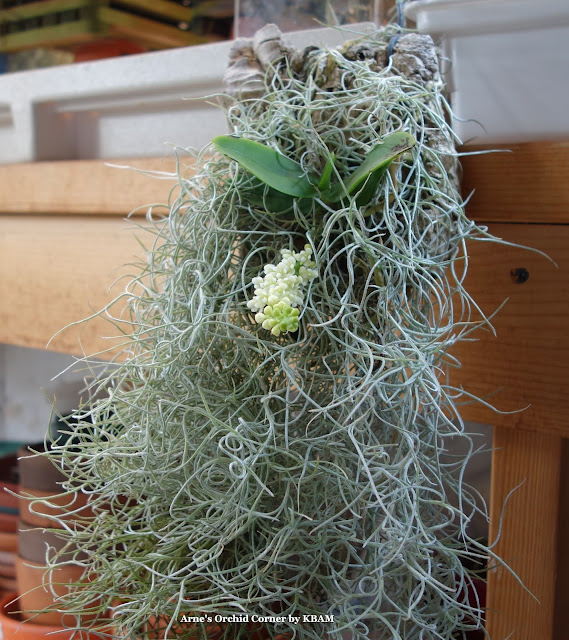 |
Angraecum sesquipedale |
 |
| (A) Only four flowers were fully opened here. You can see one bud in the upper left, between the two flowers. |
 |
| (B) A close up of one flower. Endemic orchid to Madagascar. |
Together with my husband, Arne, I am writing about our orchid collection that is constantly expanding. Orchids are his favourite and coming from Malaysia, this was one of the many things about him that surprises me. I found it interesting how he cultured orchids up in Sweden. Of course with all the modern technology and pure dedication, I've come to realize that this is indeed possible! These orchids are beautiful and I definitely want others to share in their beauty.
 |
Angraecum sesquipedale |
 |
| (A) Only four flowers were fully opened here. You can see one bud in the upper left, between the two flowers. |
 |
| (B) A close up of one flower. Endemic orchid to Madagascar. |
 |
Eurychone rothschildiana |
 |
| (A) I love the apple green hue of each flower. Here only one flower is fully opened. |
 |
| (B) This time around the flowers are creeping from the base of the plant. |
 |
| (C) Arne had repotted this orchid and this may explained why the flowers appear to be low to the base of the orchid. The roots are creeping outwards, always a good indication! |
 |
Phalaenopsis lindenii |
 |
| (B) A closer view of our Phalaenopsis lindenii in August 2020. |
 |
| (C) Six opened flowers and seven buds. |
 |
| (D) A delicate flower with yellow ochre speckles in the center of the lip. |
 |
| (E) Although the flowers are always appreciated, I find the varigated pattern on the leaves very beautiful. |
 |
| (F) As of January 5, 2021, the stem has carried 21 flowers since August this year including the very last flower. |
 |
Tuberolabium kotoense var. alba |
This orchid is a native of Taiwan and grows well mounted with sufficient humidity. In our case, it is mounted on a piece of cork, draped in live Spanish moss (Tillandsia usneoides), which creates a humid microclimate around the orchid. Arne bought this orchid from a well established orchid culturist in 2018. The flower stem holds numerous small pleasantly fragrant flowers which are surprisingly pure white and this would suggest that we have the alba form of this species.
 |
| (A) Staying humid, craddled in a nest of Spanish moss. |
 |
| (B) Bright and white flowers. |
 |
| (D) Although this orchid is doing well in our care, this is not an easy orchid to culture. New orchid enthusiasts, you have been warned. |